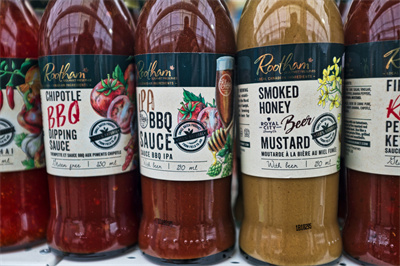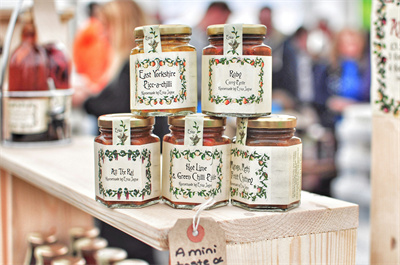Contact Us

Contact Us


Guangzhou Huaisheng Packaging Co.,Ltd.
We provide customers with quality products and provide high-quality services.
If you would like to leave us a comment please go to contact us
+86-18122240089

In the competitive landscape of the food industry, understanding psychology's subtle yet powerful influence on consumer behavior can be a game-changer for brands.
As a packaging and marketing expert, I've seen firsthand how strategic design elements in food packaging can significantly impact product sales. This article will delve into the psychological principles behind effective food packaging label design and offer actionable insights to leverage these principles for boosting sales.
Food packaging serves as the silent salesman on the shelves of supermarkets and grocery stores. Beyond protecting and preserving the product, the packaging plays a pivotal role in attracting consumers and influencing their purchasing decisions. The design of a food packaging label is not just about aesthetics; it's a strategic tool that can evoke emotions, convey messages, and ultimately, drive sales. By applying psychological principles to label design, brands can connect with consumers, increasing brand loyalty and market share.
Colors are one of the most impactful elements in visual communication, capable of evoking specific emotions and associations. In food packaging, the choice of color can influence a consumer's perception of the product's taste, quality, and healthiness.
For instance, green is often associated with freshness and health, making it a popular choice for organic and natural products. On the other hand, red can stimulate appetite and grab attention, which is why it's frequently used for fast-food and snack products.
Brands can use color psychology to their advantage by choosing hues that align with the product's attributes and target market preferences. For example, using earth tones like brown and green can convey an eco-friendly and organic message, appealing to health-conscious consumers. Meanwhile, bright and bold colors can create a sense of excitement and fun, attracting a younger demographic.

The choice of font and typography in food packaging label design is not merely a stylistic decision; it plays a crucial role in readability, brand perception, and emotional impact. With their classic and traditional feel, Serif fonts can evoke a sense of trustworthiness and quality, making them suitable for premium or artisanal products. With their clean and modern appearance, Sans-serif fonts convey simplicity and modernity, appealing to a contemporary audience.
Furthermore, the size, color, and placement of typography can affect how quickly and effectively consumers can gather information about the product. For brands, ensuring that key information such as the product name, benefits, and unique selling points are easily readable and prominently displayed can enhance product appeal and encourage purchase decisions.
Humans are visual creatures, and the imagery used on food packaging can instantly communicate what the product is about and who it is for. High-quality images of the product can stimulate appetite and desire, while icons and symbols can quickly convey key product attributes such as gluten-free, vegan, or non-GMO.
When selecting imagery for food packaging, it's important to consider the brand's story and values. Authentic and relatable images that reflect the product's quality and the brand's commitment to sustainability or health can foster a deeper connection with consumers. Moreover, incorporating culturally relevant symbols can appeal to specific target markets, making the product more relatable and appealing.

To effectively apply psychological principles in food packaging label design, consider the following tips:
Understand Your Target Audience: Conduct market research to understand the preferences, values, and behaviors of your target consumers. This insight will guide the choice of colors, fonts, and imagery that resonate with your audience.
Simplicity is Key: In a cluttered retail environment, simplicity in design can help your product stand out. Use clean lines, ample white space, and clear, concise messaging to make your packaging visually appealing and easy to understand.
Emphasize Product Benefits: Use psychological triggers such as scarcity (limited edition), authority (endorsed by experts), and social proof (best-seller) to highlight the benefits of your product and encourage purchase decisions.
Test and Iterate: Consumer preferences can evolve, so it's crucial to test different design elements and gather feedback. Use focus groups, surveys, and A/B testing to refine your packaging design based on consumer insights.
By understanding and applying insights into color psychology, font and typography, and imagery, brands can create packaging that not only stands out on the shelf but also resonates with consumers on an emotional level.
As the market continues to evolve, staying informed and adaptable to consumer preferences will be key to leveraging packaging design as a strategic tool for success.
Incorporating these psychological insights into your food packaging design strategy can transform your product's packaging from mere containers into compelling storytellers that captivate and convert consumers. The power of psychology in packaging design is undeniable, and when harnessed effectively, it can elevate your brand and drive remarkable sales growth.
